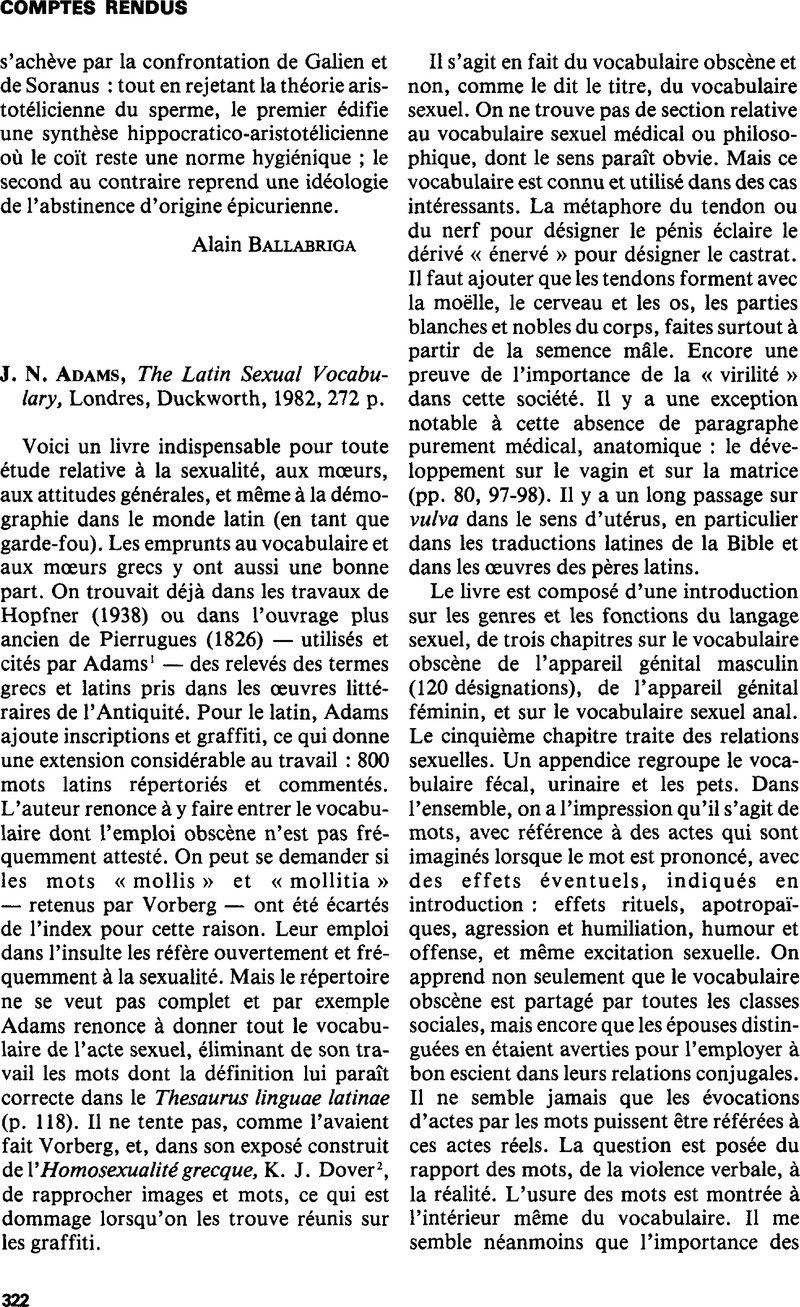No CrossRef data available.
Article contents
J. N. Adams, The Latin Sexual Vocabulary, Londres, Duckworth, 1982, 272 p.
Published online by Cambridge University Press: 26 July 2017
Abstract

- Type
- Histoire Ancienne (comptes rendus)
- Information
- Copyright
- Copyright © Copyright © École des hautes études en sciences sociales Paris 1987
References
1. Vorberg, G., Glossarium eroticum, Stuttgart, 1932 Google Scholar (on le trouve au Deutsches Archàologisches Institut de Rome, Réimpr. Hanau/ Main, 1965).
2. Trad. frse de S. SAÏD, Grenoble, Éd. de La Pensée Sauvage, 1982 (1978).
3. Nouvelles études sur l'hystérie, Paris, Denoël-Clims, 1984, pp. 55-56.
4. Voir Foucault, M., Histoire de la sexualité, II, L'usage des plaisirs, Paris, Gallimard, 1984, p. 198 Google Scholar et édition trad. A. Wartelle de Y Économique, Paris, 1968, p. 4.
5. Puisque le coq n'apparaît pas dans ce répertoire, je signale les articles de Lorrayne J. Baird, où l'on verra évoluer le mot gallus depuis un symbolisme de la puissance sexuelle jusqu'à la référence à la chasteté parfaite. On y trouvera une très abondante bibliographie concernant aussi bien l'Antiquité que le Moyen Age, et même l'époque moderne : « O.E.D. Cock 20. The Limits of Lexicography of Slang », dans Maledicta, The International Journal of Verbal Agression, 5, 1981, pp. 213- 225 ; « Priapus Gallinaceus : The Rôle of the Cock in Fertility and Eroticism in Classical Antiquity and the Middle Ages », Studies in Iconography, 7-8, 1981-1982, pp. 81-111 ; «“Cockes Face” and the Problem of poydrace in the Chester Passion », Comparative Drama, 16, 1982, pp. 227-237 ;«“Christus Gallinaceus” :a Chaucerian Enigma. Or the Cock Symbol of Christ in the Middle Ages », Studies in Iconography, 9, 1983, pp. 19-30.




